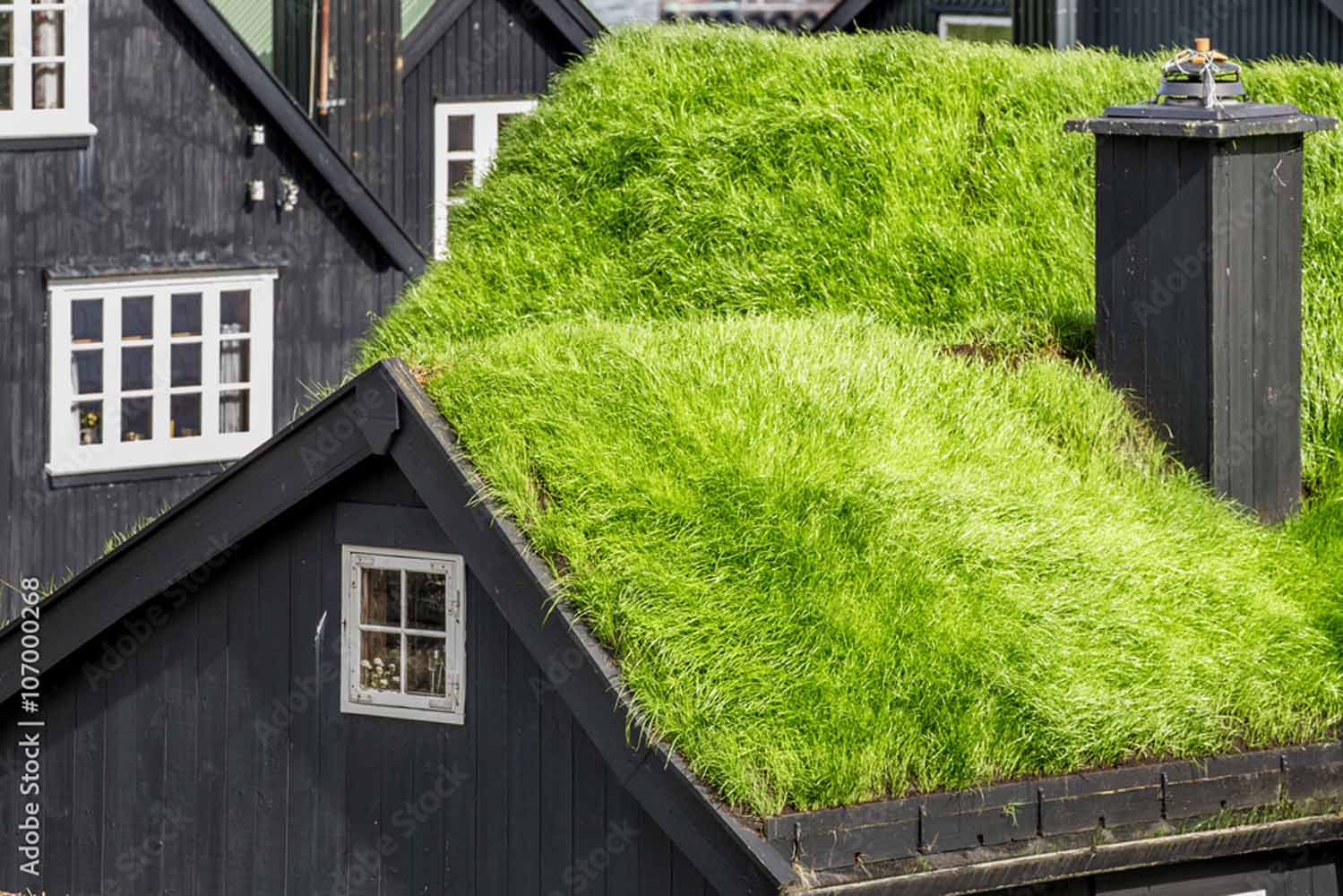What is a Living Roof?
Upon making the decision to have a new roof installed on your home, you’ll need to consider all of the different materials that are available for this process. You’re probably very familiar with the standard roof made of asphalt shingles or the occasionally used metal roof, but have you ever heard of a living roof? This green roof system incorporates vegetation into the design of a roof, offering a number of environmental benefits. Let’s talk more about this living roof system and whether or not it’s practical for your home.

What Is a Living Roof?
Living roofs are essentially roof gardens that incorporate drought tolerant vegetation on the top of your structure. They come in a few different setups, some with very extensive designs that can have over 150 types of vegetation on them. It takes a bit of work to get this roof system going, including planting, irrigation, maintenance, feeding, and more. Minimal soil is needed, and some property owners choose to have irrigation incorporated into their living roof design. These living roofs usually look best when viewed from an aerial perspective, but they’re also really nice if you have access to your rooftop or just from the ground below. Living roofs aren’t just for houses either. Your garage, shed, or office building can all have living roofs.
Benefits
You might be asking yourself why a living roof is even a thing. It’s not something you see every single day, but there are some benefits of using this design. They’re aesthetically pleasing to start out with, but they’re also very practical in regard to water runoff and insulation. If you live somewhere that experiences a great deal of rainfall throughout the year, that water can be used to water your living roof vegetation. This will reduce stormwater runoff needs if you don’t have a very sloped roof. It can also reduce flooding in your yard as well as preventing pollution of your local water table. Living roofs also add insulation to your home by as much as 25 percent in the winter months and you can reduce energy demands in the summer by as much as 75 percent.
If you’re concerned with the life span of your roof, you’ll be happy to know that a green roof system can have a lifespan of two to three times longer than your average asphalt shingles. Not only are you making an affordable and beneficial investment for your home, but you’re helping out the wildlife in your area as well. Birds and insects will love your living roof design.

The Environmental Benefit of a Living Roof
If you’re trying to be environmentally conscious with your roof choice, the plants on your living roof give off oxygen and absorb carbon dioxide. Plants use the process of photosynthesis to capture carbon dioxide (CO2) and water (H2O) from the air and soil. Then the water is oxidized and turned into oxygen and the CO2 is reduced and turned into glucose. The plants release the oxygen back into the air and store energy within the glucose molecules.
Plants use energy from sunlight to fuse a molecule of CO2 to a molecule of water, H2O, to form carbohydrates. One molecule of oxygen O2 is released to the air for each CO2 molecule removed. Biological machinery of plants reworks the carbohydrate polymers into proteins, oils and other molecules of life.

Types
There are different levels of green roof systems that incorporate vegetation. Some small homes may use a very minimal design while more elaborate commercial properties opt for a much more extensive roof garden concept. Let’s look at some of the different types in more detail.
-Extensive
The extensive green roof concept has a low weight by way of a thin layer of substrate and a good deal of vegetation. The plants chosen should be drought tolerant and hold up well to the varying conditions that will exist on that specific roof. This is the most affordable living roof option.
-Intensive
The most elaborate living roof design you’re going to come across, the intensive design features unlimited plant varieties such as grasses, bulbs, perennials, trees and bushes. You may find different varieties blooming at different times of the year, and a pretty substantial amount of maintenance is needed on a regular basis.
-Semi-Intensive
The semi-intensive living roof falls between extensive and intensive. It’s low to medium maintenance, like an extensive roof, but it will have a much thicker layer of vegetation on it than it, so you can have a lot more variety in the plant life. The semi-intensive green roof may benefit from some sort of irrigation system to be installed in order to keep up with the necessary watering.

If you’re interested in learning more about living roofs and the different benefits that they can provide, reach out to us here at Hammersmith Roofing and Construction. As an experienced roofing contractor, we install several different types of roofs in the greater Richmond, VA area. We have the skills needed in order to install roofs for family homes, apartment buildings, restaurants, retail stores, and townhomes.





